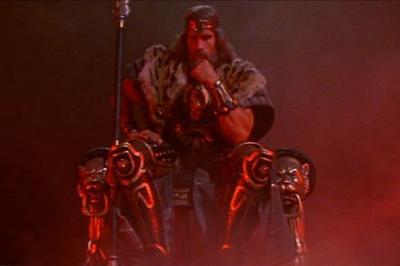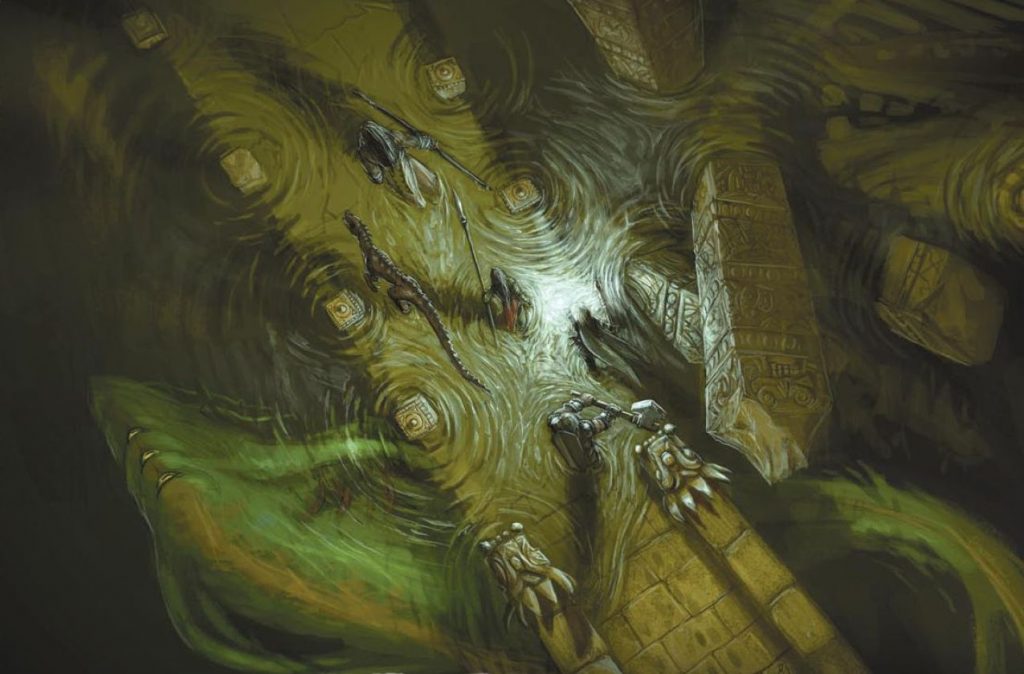So here I am again, writing about RPGs. Even though I am creating the Old World as a fiction setting, I can’t shake the constant thought that it also would make for a really great campaign setting. And once more I am finding myself getting back to B/X, specifically LotFP. Yes, I know: Oh, the irony! Aside from the magic system (for which I have a complete replacement almost ready) I just really love the game in all its simplicity. Combat, character advancement, and monsters are just exactly the way I really want it.
With my experiences in fiction worldbuilding, my look on preparing a campaign setting for an RPG also changed a lot. In the past I used to attempt to emulate the structure of settings like Forgotten Realms, Eberron, and Golarion, and for a long while really didn’t know what to make of things like Red Tide, Yoon-Suin, or the Wilderlands of High Fantasy. But having learned a lot about Sword & Sorcery worldbuilding in fiction, this very much changed and I am seeing what’s the deal with the later and how it fits my own purposes. Often less is more, and in this case it is much more less that is so much more. I am no longer interested in precise maps, borders, or population numbers for cities and countries. Making up new villages and dungeons as I go will be good enough.
But even when you have a setting that is defined by culture and environments and not by specific places and organizations, to have a campaign in which the players have real agency is that you know who the movers and shakers in the campaign area will be. And one topic that none of the many guides and introductions for running unscripted campaigns ever touch upon is the creation of NPCs. What class level should the major NPCs in the campaign have?

Now one very easy solution would be to not set a level for NPCs until the players run into them for a fight. But that causes a pretty major problem. The decision of the players to fight an NPC or not is based on whether they think they can win such a fight or not. Chosing to start a private war with a powerful local leader is as big a choice as players are going to make, and it can only be an informed and meaningful decision if the strength of the NPC is fixed before the decision is made. If you create stats for an NPC only once you know that the players are looking for a fight, their choice will have been meaningless. When you decide to make the NPC beatable or unbeatable for the party at its current strength, the players are completely without power to influence the survival and victory of their characters. Over the years there has been a lot of talking over what makes the differences between the videogames Morrowind and Oblivion (and now Skyrim as well), and one thing that really changed how the games play is the adjustment of enemies to the level of the player, or the lack of it. In Oblivion and Skyrim it has become irrelevant what places you chose to visit and what quests to try, because the difficulty will always be the same. When you discover an area that seems too dangerous for your character, you might choose to leave and go somewhere safer for now. When you then return a long time later, after lots of great adventures and getting many powerful new weapons, and it’s still just as hard as it was the last time, then it really feels like you didn’t make any progress at all and didn’t become more powerful in any way either. What’s the point of reaching higher levels and gaining better weapons and armor if it doesn’t make any difference? In Morrowind monsters and NPCs are always the same strength, regardless of how powerful your character is. While this does mean that you will occasionally have to admit defeat and retreat, it really makes a huge difference to the sense of accomplishment and progress, that is an important part of unscripted videogames and RPG campaigns alike. Losing is good, because it tells you that any victory you gain has been earned.
Continue reading “Thinking about NPC levels in an Old World campaign”


